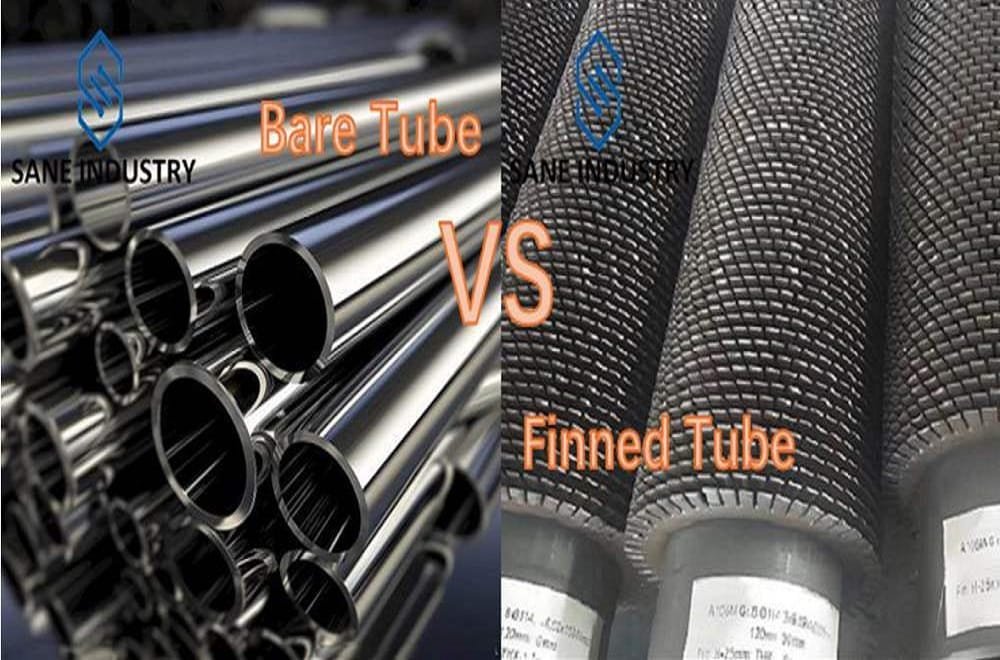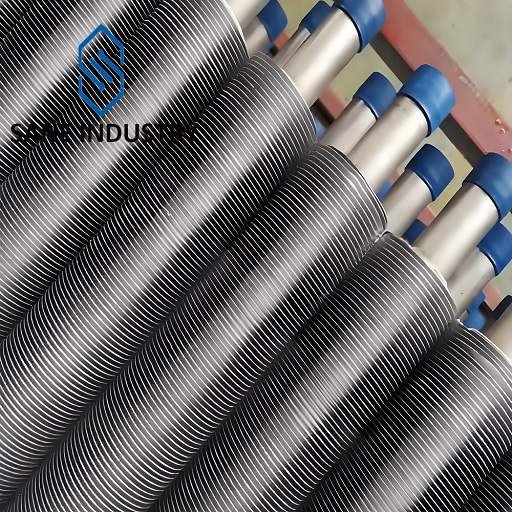Heat transfer tubes serve as the primary interface for thermal energy exchange in industrial systems. The choice between bare tubes and finned tubes significantly impacts equipment efficiency, space requirements, and operational costs across industries ranging from power generation to HVAC. Here is a detailed comparison between bare tubes and finned tubes covering structural, functional, and application differences, etc.
1. Structural Characteristics
- Smooth, uninterrupted cylindrical surface without protrusions.
- Uniform cross-section (typically circular tubes, occasionally oval tubes/rectangular tubes).
- Material options: Carbon steel tubes, stainless steel tubes, copper tubes, plastics tubes (PVC, HDPE).
- Outer surface integrated with protruding fins (attached via welding, extrusion, or wrapping).
- Fin types:
- Spiral fin tubes: Helical wound metal strips (common in HVAC).
- Longitudinal fin tubes: Straight fins parallel to the tube axis (used in oil coolers).
- Embedded fin tubes: Fins mechanically bonded into grooves (high-pressure applications).
- Material combinations: Aluminum fins on copper tubes (lightweight + high conductivity), stainless steel fins for corrosion resistance.

2. Heat Transfer Mechanisms
Bare Tube
- Relies on:
- Conduction through tube walls.
- Natural convection from exposed surfaces (limited efficiency in air).
- Heat transfer rate (Q) follows Fourier’s Law: Directly proportional to surface area and temperature gradient.
Finned Tube
- Enhances heat transfer via:
- Extended surface area: Fins amplify effective heat exchange area by 3–10x.
- Forced convection: Fins disrupt boundary layers, improving airflow contact.
- Performance metrics:
- Fin efficiency: Ratio of actual heat transfer to ideal transfer (depends on fin geometry/material).
- Overall effectiveness: Combines tube conductivity and fin convective enhancement.
3. Applications
Bare Tube Uses
- Fluid transport pipelines (water, steam, oil).
- Shell-and-tube heat exchangers (liquid-liquid heat transfer).
- Low-cost radiators (e.g., residential hydronic heating).
Finned Tube Uses
- Air Cooling: Condensers in refrigeration, power plant air-cooled condensers (ACC).
- Compact Heat Exchangers: Automotive intercoolers, data center cooling systems.
- High-Temperature Recovery: Waste heat boilers, exhaust gas economizers.
4. Performance Comparison
| Parameter | Bare Tubes | Finned Tubes |
|---|---|---|
| Heat Transfer Area | Limited to tube surface area | 4-15× larger (fin-enhanced) |
| Heat Transfer Coefficient | 25-50 W/m²K (air) | 80-300 W/m²K (air) |
| Pressure Drop | Low (<50 Pa/m) | Higher (200-800 Pa/m) |
| Fouling Resistance | Better for liquids | Prone to dust accumulation |

5. Manufacturing & Cost
Bare Tube
- Produced via standard extrusion/rolling processes.
- Cost: $2–10 per meter (material-dependent).
Finned Tube
- Complex fabrication:
- Extruded fins: Aluminum fins formed by pushing heated metal through dies.
- Wound fins: Spiral fins wrapped under tension.
- Cost: $15–100 per meter (varies with fin density/material).
6. Maintenance Considerations
- Bare tubes: Easy to clean (mechanical brushing/chemical flushing).
- Finned tubes: Require compressed air/coil cleaning systems to prevent clogging.
Conclusion
Finned tubes dominate scenarios requiring high heat dissipation in gases, while bare tubes remain optimal for simple fluid transfer or liquid-phase heat exchange. The choice hinges on thermal load, space constraints, and lifecycle cost analysis.




